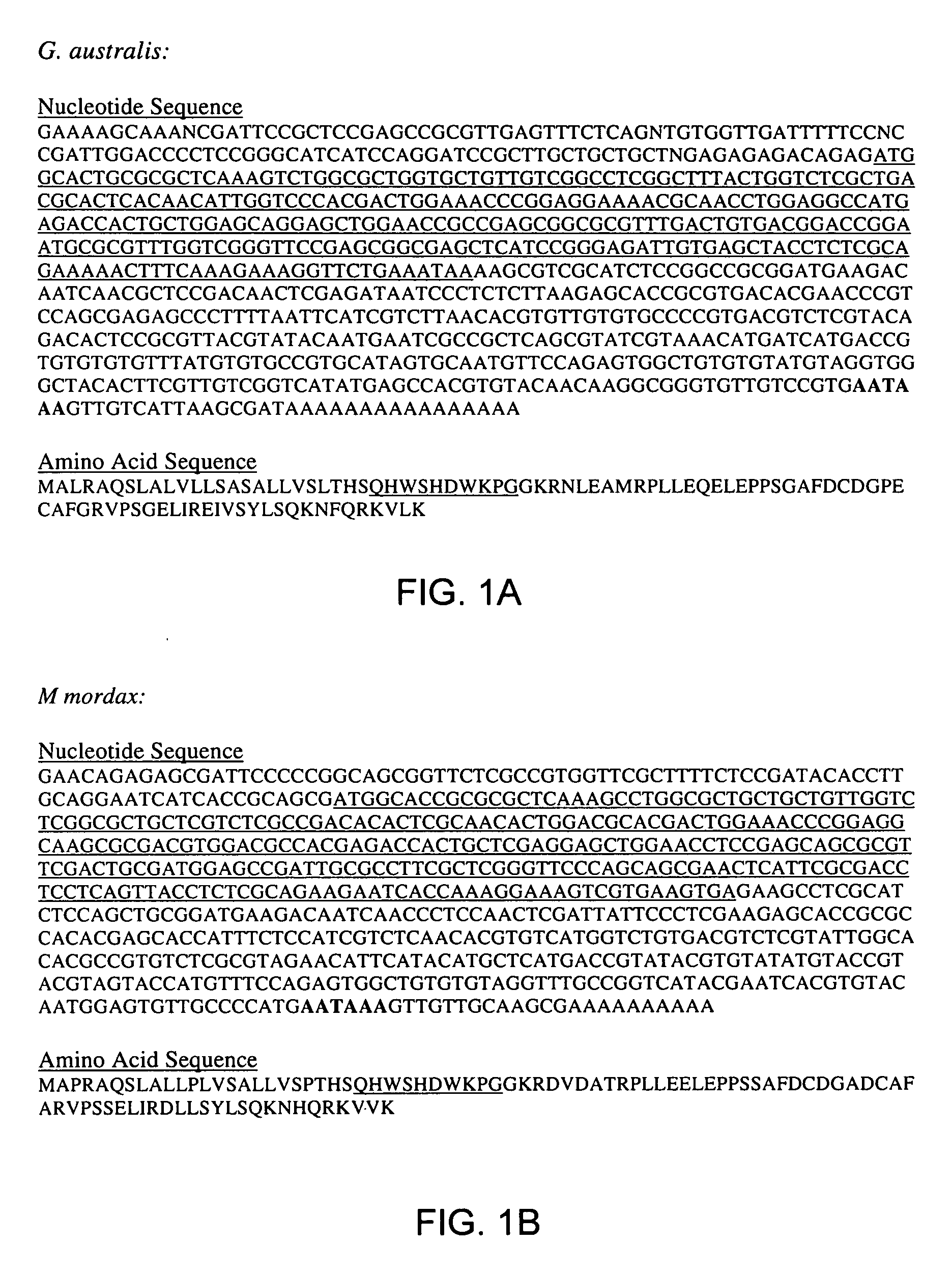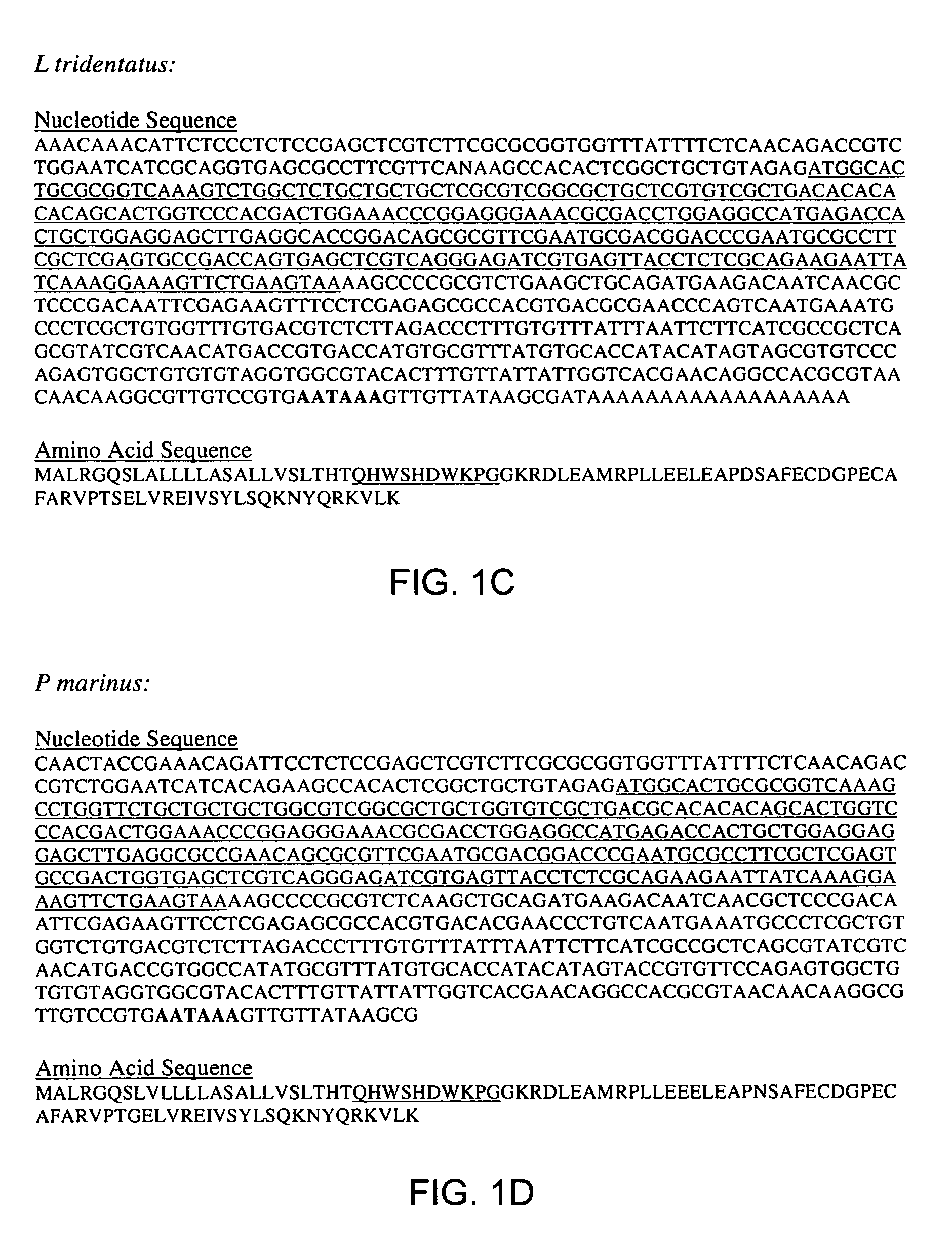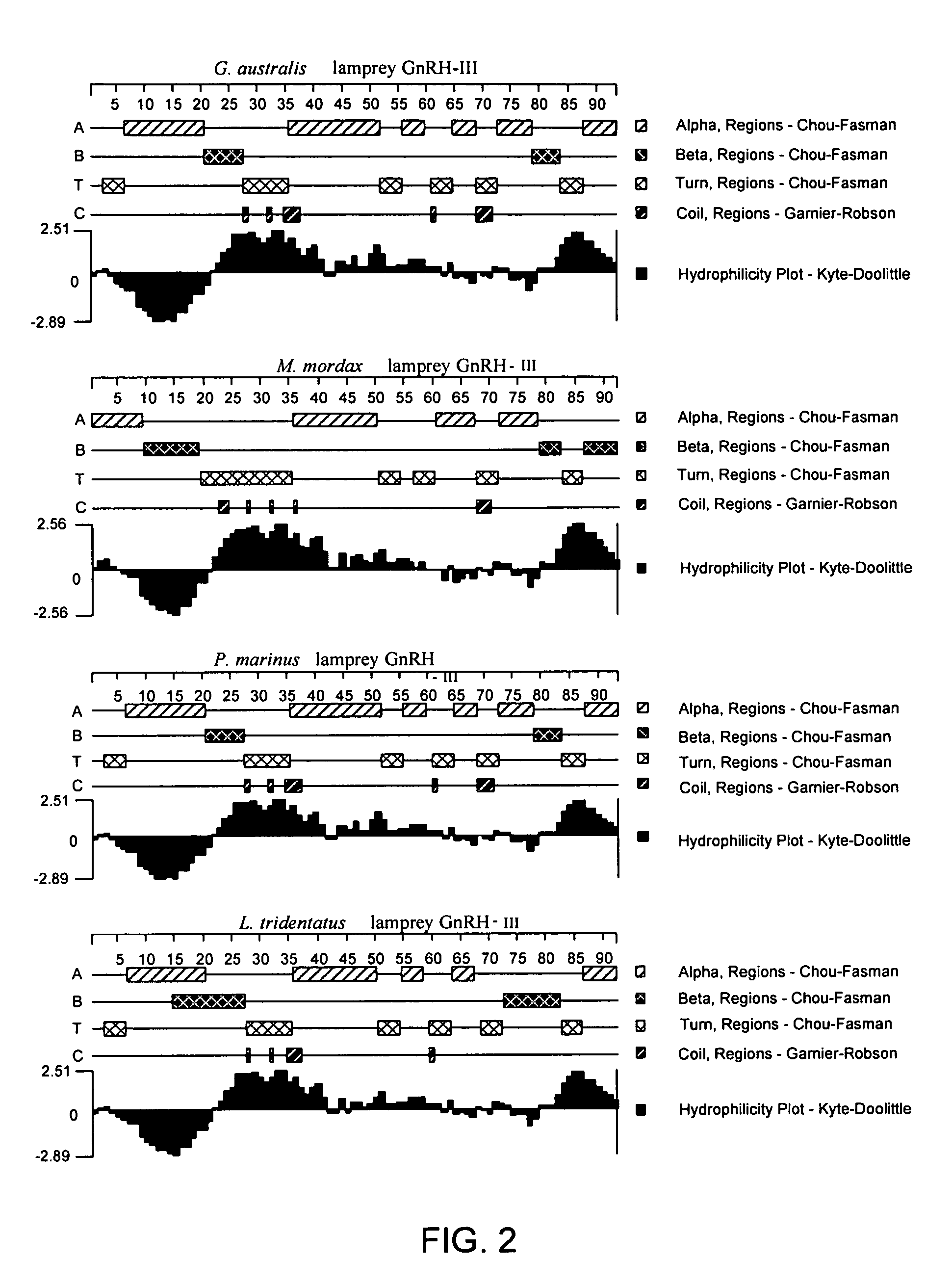Lamprey GnRH-III polypeptides and methods of making thereof
a technology of gnrh and polypeptides, which is applied in the field of new lamprey gnrh forms and methods of making thereof, can solve the problems of limited success in manipulating the reproductive cycle and spawning of reared fish, and many economically important fish do not reproduce spontaneously in captivity
- Summary
- Abstract
- Description
- Claims
- Application Information
AI Technical Summary
Problems solved by technology
Method used
Image
Examples
Embodiment Construction
[0048] The present invention includes isolated cDNA's, and the peptides encoded thereby, encoding the lamprey GnRH-III precursor, comprising the coding regions for the lamprey GnRH-III signal peptide, the lamprey GnRH-III decapeptide, the conserved cleavage site, and an associated peptide called GnRH-III associated peptide (GAP). The cDNA of the lamprey GnRH-III were isolated from 4 species of lamprey, from the three families of lamprey: L. tridentatus, and P. marinus from Petromyzonidae; G. australis from the Geotriidae, and M. mordax from the Mordaciidae.
[0049] The present invention also provides methods for the manipulation of ovulation and spawning in female and male fish using the lamprey GnRH peptide and analogs thereof, and methods for using the cDNA's encoding lamprey GnRH-III. Additionally, the present invention is method of producing the isolated GnRH-III polypeptides.
[0050] To date, two molecular forms of GnRH have been identified and sequenced in the sea lamprey: lampr...
PUM
| Property | Measurement | Unit |
|---|---|---|
| body weight | aaaaa | aaaaa |
| temperature | aaaaa | aaaaa |
| diameter | aaaaa | aaaaa |
Abstract
Description
Claims
Application Information
 Login to View More
Login to View More - R&D
- Intellectual Property
- Life Sciences
- Materials
- Tech Scout
- Unparalleled Data Quality
- Higher Quality Content
- 60% Fewer Hallucinations
Browse by: Latest US Patents, China's latest patents, Technical Efficacy Thesaurus, Application Domain, Technology Topic, Popular Technical Reports.
© 2025 PatSnap. All rights reserved.Legal|Privacy policy|Modern Slavery Act Transparency Statement|Sitemap|About US| Contact US: help@patsnap.com



